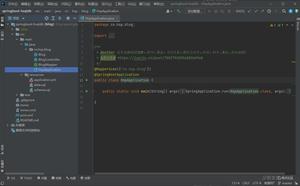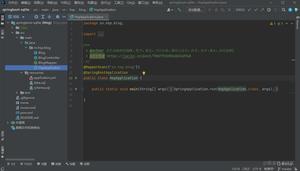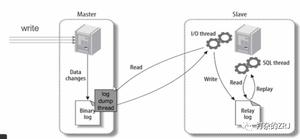postgresql 中的参数查看和修改方式
1.查看参数文件的位置
使用show 命令查看,比较常用的show config_file.此还可以查看pg_settings数据字典.
test=# show config_file;
config_file
------------------------------
/data/pgdata/postgresql.conf
(1 row)
test=# show hba_file
test-# ;
hba_file
--------------------------
/data/pgdata/pg_hba.conf
(1 row)
test=# show ident_file ;
ident_file
----------------------------
/data/pgdata/pg_ident.conf
2.查看当前会话的参数值
可以使用show命令或者查看pg_settings字典.
使用show all可以查看全部的参数值.show 参数名查看指定参数
test=# show all;
-------------------------------------+------------------------------------------------------+-------------------------------------------------------------------------------------------------------------------------------
allow_system_table_mods | off | Allows modifications of the structure of system tables.
application_name | psql | Sets the application name to be reported in statistics and logs.
archive_command | test ! -f /data/archive/%f && cp %p /data/archive/%f | Sets the shell command that will be called to archive a WAL file.
archive_mode | on | Allows archiving of WAL files using archive_command.
archive_timeout | 0 | Forces a switch to the next WAL file if a new file has not been started within N seconds.
array_nulls | on | Enable input of NULL elements in arrays.
...
test=# show work_mem;
work_mem
----------
4MB
(1 row)
test=# \x
Expanded display is on.
test=# select * from pg_settings where name in ('work_mem')
test-# ;
-[ RECORD 1 ]---+----------------------------------------------------------------------------------------------------------------------
name | work_mem
setting | 4096
unit | kB
category | Resource Usage / Memory
short_desc | Sets the maximum memory to be used for query workspaces.
extra_desc | This much memory can be used by each internal sort operation and hash table before switching to temporary disk files.
context | user
vartype | integer
source | default
min_val | 64
max_val | 2147483647
enumvals |
boot_val | 4096
reset_val | 4096
sourcefile |
sourceline |
pending_restart | f
3.修改pg的参数值
1.全局修改pg的参数.
有些参数只有当pg服务重启的时候才生效,典型的例子就是shared_buffers,定义了共享内存的大小.
许多参数在pg服务运行的时候就能修改.再更改之后像服务器执行一个reload操作,强制pg重新读取postgresql.conf,因此你只需要编辑postgresql.conf文件,再执行 pg_ctl reload 即可 . 对于需要重启的,在修改完postgresql后需要执行 pg_ctl restart
对于9.5以后的版本,可以通过查看pg_file_settings查看你设置的参数是否生效.例如如果你设置了一个参数需要重启数据库才能生效或者设置错误,那么在此字典中会出现报错.
test=# select * from pg_file_settings where error is not null;
sourcefile | sourceline | seqno | name | setting | applied | error
-----------------------------------+------------+-------+-----------------+---------+---------+------------------------------
/data/pgdata/postgresql.auto.conf | 4 | 22 | max_connections | 10000 | f | setting could not be applied
(1 row)
对于9.4以后的版本,你还可以使用 alter system 命令修改参数.使用alter system命令将修改postgresql.auto.conf文件,而不是postgresql.conf,这样可以很好的保护postgresql.conf文件,加入你使用很多alter system命令后搞的一团糟,那么你只需要删除postgresql.auto.conf,再重新加载即可.
test=# show work_mem;
work_mem
----------
4MB
(1 row)
test=# alter system set work_mem='8MB';
ALTER SYSTEM
test=# show work_mem;
work_mem
----------
4MB
(1 row)
查看postgresql.auto.conf:
[postgres@postgresql1 pgdata]$ cat postgresql.auto.conf
# Do not edit this file manually!
# It will be overwritten by the ALTER SYSTEM command.
work_mem = '8MB'
使用pg_ctl reload重新load配置文件,再查看参数值:
test=# show work_mem ;
work_mem
----------
8MB
(1 row)
2.直接使用set命令,在会话层修改,修改之后将被用于未来的每一个事务,只对当前会话有效:
test=#
test=# set work_mem='16MB';
SET
test=# show work_mem;
work_mem
----------
16MB
(1 row)
我们打开另外一个会话,查看work_mem参数,可以发现work_mem还是4MB
postgres=# show work_mem;
work_mem
----------
4MB
(1 row)
3.set命令后添加 local关键字, 只在当前事务中修改,只在当前事务内有效:
test=# show work_mem;
work_mem
----------
16MB
(1 row)
test=# begin;
BEGIN
test=# set local work_mem='8MB';
SET
test=# show work_mem;
work_mem
----------
8MB
(1 row)
test=# commit;
COMMIT
test=# show work_mem;
work_mem
----------
16MB
4.使用 reset恢复参数的默认值
再pg_settings字典reset_val字段表示了如果使用reset,则此参数恢复的默认值为多少
使用 reset 参数名 来恢复某个参数的默认值,使用 reset all来恢复所有的参数值.
test=# show work_mem;
work_mem
----------
16MB
(1 row)
test=# reset work_mem;
RESET
test=# show work_mem;
work_mem
----------
4MB
(1 row)
test=# reset all;
RESET
5.为特定的用户组设置参数
一.为特定的数据库里的所有的用户设置参数,例如为test数据库所有的连接设置work_mem为16MB:
test=# alter database test set work_mem='16MB';
ALTER DATABASE
二.为数据库中的某个特定用户设置参数.例如为brent用户,设置work_mem为2MB:
postgres=# alter role brent set work_mem='2MB';
ALTER ROLE
经过测试发现,如果你同时为数据库和用户设置了特定参数,那么以用户为准.例如上面的,如果我用brent用户连接到test数据库,那么我的work_mem应该为2MB:
postgres=# \c test brent
You are now connected to database "test" as user "brent".
test=>
test=>
test=> show work_mem;
work_mem
----------
2MB
三.为某个特定用户连接到特定的数据库设置参数.例如为用户brent在数据库test中设置work_mem为8MB
test=# alter role brent in database test set work_mem='8MB';
ALTER ROLE
上面说的三种设置,优先级递增,也就是说,如果设置了1,2,3那么就以第3个为准,如果设置了1,2那么就是以2为准,以此类推.
pg对此的实现方法和当用户连接数据库的时候,立刻手动执行set命令的效果完全相同
查看你当前的参数值是从何处指定,可以通过查询pg_setttings中的source字段获取,例如如果设置了database级别的参数.那么查询结果应该如下:
test=# select name,setting,source from pg_settings where name='work_mem';
name | setting | source
----------+---------+----------
work_mem | 16384 | database
其它的,例如设置了第三种:
test=# \c test brent
You are now connected to database "test" as user "brent".
test=> select name,setting,source from pg_settings where name='work_mem';
name | setting | source
----------+---------+---------------
work_mem | 8192 | database user
补充:postgresql重要参数解析及优化
1,max_connections 200
最大客户端连接数。每个连接在后端都会对应相应的进程,耗费一定的内存资源。如果连接数上千,需要使用连接池工具。
2,shared_buffers 25% of total memory
数据库用于缓存数据的内存大小。该参数默认值很低(考虑不同的系统平台),需要调整。不宜太大,很多实践表明,大于1/3的内存会降低性能。
3,effective_cache_size 50%-75% of total memory
This is a guideline for how much memory you expect to be available in the OS and PostgreSQL buffer caches, not an allocation! 这个参数只在查询优化器选择时使用,并不是实际分配的内存,该参数越大,查询优化器越倾向于选择索引扫描。
4,checkpoint_segments 256 checkpoint_completion_target 0.9
checkponit_segments wal个数达到多少个数checkponit,还有一个参数checkponit_timeout,控制最长多长时间checkpoint。对于写入比较大的数据库,该值越大越好。但是值越大,执行恢复的时间越长。
checkpoint_completion_target 控制checkponit write 分散写入,值越大越分散。默认值0.5,0.9是一个比较合适的值。
5,work_mem
用于排序,默认值即可。每个连接都会分配一定work_mem,这个是会实际分配的内存,不宜过大,默认值即可。如果要使用语句中有较大的排序操作,可以在会话级别设置该参数,set work_men = ‘2GB',提高执行速度。
6,maintanance_work_mem
维护性操作使用的内存。例如:vacuum ,create index,alter table add foreign key,restoring database dumps.做这些操作时可以临时设置该值大小,加快执行速度。set session maintanance_work_mem = ‘2GB';
7,random_page_cost (默认值 4) seq_page_cost(默认值 1)
设置优化器获取一个随机页的cost,相比之下一个顺序扫描页的cost为1.
当使用较快的存储,如raid arrays,scsi,ssd时,可以适当调低该值。有利于优化器悬着索引扫描。ssd 时,可以设置为2.
8,autovacuum
—maintenance_work_mem 1-2GB
—autovacuum_max_workers
如果有多个小型表,分配更多的workers,更少的mem。
大型表,更多的men,更少的workers。
以上为个人经验,希望能给大家一个参考,也希望大家多多支持。如有错误或未考虑完全的地方,望不吝赐教。
以上是 postgresql 中的参数查看和修改方式 的全部内容, 来源链接: utcz.com/z/362255.html









